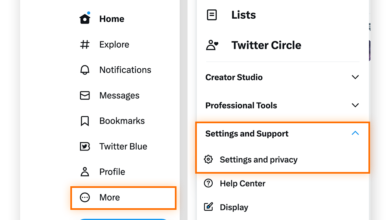Instanavigation: Simplifying Navigation for a Seamless Online Experience

Navigating the digital world is often overwhelming due to the vast array of websites, apps, and information sources available. With people expecting instant and accurate results, the idea of Instanavigation—or immediate, seamless navigation—has become essential. This article dives into what Instanavigation is, how it works, its benefits, and how it’s changing our online experiences for the bettle
1. Introduction to Instanavigation
Instanavigation is about making the journey from point A to point B as fast and easy as possible, whether on websites, in apps, or other digital environments. It’s a design and technological approach that prioritizes intuitive interfaces, fast-loading elements, and logical layout structures to minimize the time users spend navigating. This approach helps users find what they need without unnecessary clicks, loading times, or confusion.
2. Understanding Instanavigation: What Does It Mean?
At its core, In refers to systems and designs that allow instant access to information. This concept has become increasingly popular as users demand faster and more streamlined access to content. From predictive search bars to instant page loading, Insta makes finding content nearly instantaneous, improving overall user satisfaction.
3. The Evolution of Navigation in the Digital World
Navigation has changed drastically since the early days of the internet. Initially, websites were static, with simple links and limited interactive elements. Over time, as the digital landscape grew, navigation systems evolved to include complex menus, breadcrumbs, and even AI-driven search. represents the latest stage in this evolution, where speed, user control, and simplicity are prioritized.
4. Key Features of Instanavigation
relies on several essential features that streamline access to information:
- Predictive Search: Shows possible results as users type.
- Quick Links and Hotkeys: Allows fast access to frequently visited sections.
- One-Click Access: Reduces the steps needed to reach key sections.
- Instant Loading Elements: Uses preloaded resources for faster performance.
- User-Centered Design: Focuses on making navigation intuitive and logical.
5. How Instanavigation Works
employs advanced coding and design practices to anticipate user actions and provide near-instant responses. Key methods include:
- Caching: Preloading certain elements in anticipation of user clicks.
- JavaScript Libraries: Libraries like React or Vue.js support instant content rendering.
- AI and Machine Learning: Predicts user intentions, making navigation faster and more personalized.
- Responsive Design: Ensures consistent navigation across devices, especially on mobile.
These methods create a seamless experience by reducing load times and minimizing clicks.
6. Types of Instanavigation Applications
- Websites: E-commerce, social media, and informational websites use Instanavigation to improve user retention.
- Mobile Apps: Apps like Uber or Amazon have perfected for quick, easy use.
- GPS and Mapping Tools: GPS apps like Google Maps use to provide real-time, precise directions.
Each application optimizes for instant user action based on the nature of the platform and the needs of its users.
7. Benefits of Instanavigation for Users
Instanavigation offers several advantages that make online interactions easier and more enjoyable:
- Enhanced User Satisfaction: Less time searching means happier users.
- Higher Retention Rates: Users are more likely to return if navigation is easy and intuitive.
- Time Efficiency: Instant access reduces browsing time.
- Reduced Bounce Rates: Instanavigation encourages users to explore more of a website.
8. Instanavigation in Websites vs. Mobile Apps
Though both websites and mobile apps benefit from ach has unique design challenges. Websites often focus on multi-layered navigation menus for desktop users, while mobile apps prioritize minimalism and touch-friendly interfaces. In mobile apps, elements such as swipe actions, pull-down menus, and floating action buttons improve navigation by keeping essential functions close.
9. Enhancing User Experience with Instanavigation
focuses on the user journey and reduces friction by anticipating and responding to user needs quickly. For instance:
- Personalized Navigation: Suggests pages or products based on browsing history.
- Streamlined Interface: Reduces clutter by focusing on the essentials.
- Consistent Performance: Uses responsive elements to make the experience smooth on both desktop and mobile devices.
10. Impact on E-commerce and Online Shopping
E-commerce platforms have harnessed the power of I to make shopping seamless. By simplifying product searches, offering quick-loading images, and enabling smooth checkout, they reduce friction, which boosts sales. Tools like Amazon’s 1-click checkout or predictive product recommendations exemplify creating an efficient, enjoyable shopping experience.
11. SEO Implications of Instanavigation
is not just beneficial for users—it also boosts SEO performance. Google and other search engines reward sites that provide excellent user experiences, and reduced loading times and improved site structure contribute positively to rankings. Search engines value sites with low bounce rates, higher engagement times, and easy navigation, all of which can be achieved with .
12. Instanavigation in Social Media Platforms
Social media platforms are some of the best examples of I . Platforms like Facebook and Instagram have mastered navigation so that users can instantly jump between news feeds, stories, and notifications. Intuitive menus, swipe actions, and predictive content curation allow users to consume content with minimal effort, making the experience seamless and enjoyable.
13. Popular Tools for Implementing Instanavigation
There are several tools and libraries popular among developers to implement
- React.js and Vue.js: Frameworks that support instant rendering and quick load times.
- InstantSearch.js: Provides real-time search results.
- Quicklink: Allows for faster page loads by preloading links in the background.
- Lighthouse and PageSpeed Insights: Tools that measure and improve page loading times.
These tools make it easy for developers to build features that enhance across platforms.
14. Future of Instanavigation: Trends to Watch
As technology evolves, will likely incorporate more AI and machine learning to anticipate user behavior even more accurately. Future developments may include:
- Voice-Activated Navigation: Adding voice commands for hands-free navigation.
- Augmented Reality (AR): Providing interactive navigation overlays in AR applications.
- Predictive Personalization: AI-driven predictions tailored to user preferences.
- 5G Integration: Faster mobile internet will make instant navigation even smoother.
These advancements promise to make even more responsive and personalized in the years ahead.
15. Frequently Asked Questions (FAQs) about Instanavigation
Q1: What exactly is Instanavigation?
A: Instanavigation refers to systems that allow users to access information instantly, without unnecessary clicks or load times.
Q2: Why is Instanavigation important for websites?
A: keeps users engaged by providing fast and easy access to content, reducing bounce rates and improving user satisfaction.
Q3: Can small businesses benefit from Instanavigation?
A: Absolutely! improves user experience, which can boost customer retention and enhance brand credibility.
Q4: How does Instanavigation affect SEO?
A: By improving page speed and reducing bounce rates, can positively impact a website’s search engine ranking.
Q5: Are there tools to help implement Instanavigation?
A: Yes, tools like React.js, Quicklink, and InstantSearch.js make it easier to implement features that support Instanavigation.
Q6: Is Instanavigation costly to implement?
A: Instanavigation features vary, and the cost depends on the specific tools and design changes needed. Many options are available for businesses of all sizes.
Conclusion
represents a shift towards user-first design, prioritizing speed, intuitiveness, and simplicity. As we navigate an increasingly digital world, systems that provide fast, seamless access to information help improve user experience and make browsing more enjoyable. Whether for e-commerce, social media, or general web browsing, is shaping the way we interact with digital content, creating a smoother, more efficient journey for every user.




